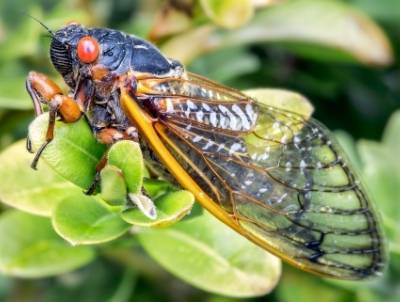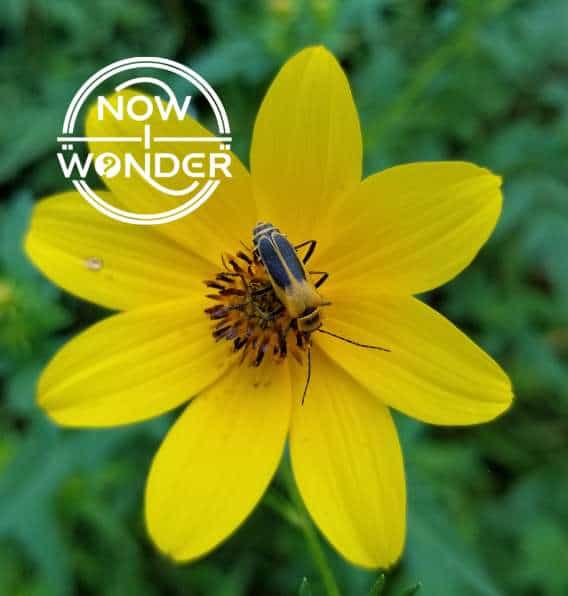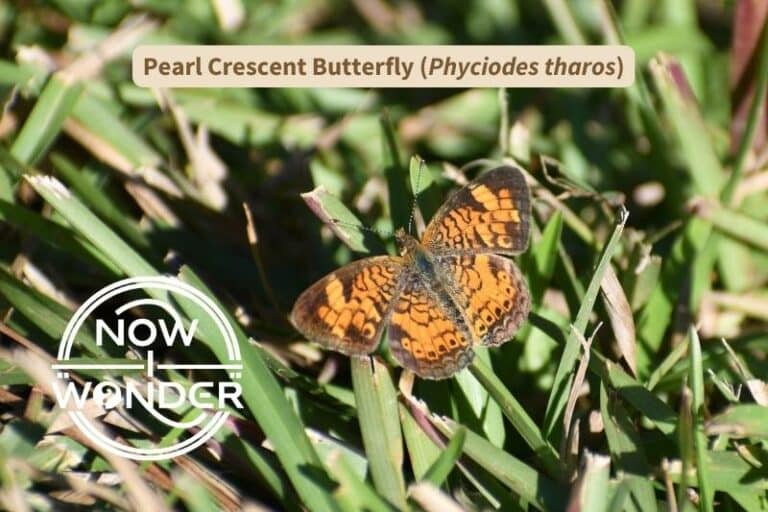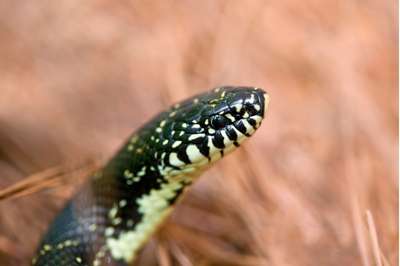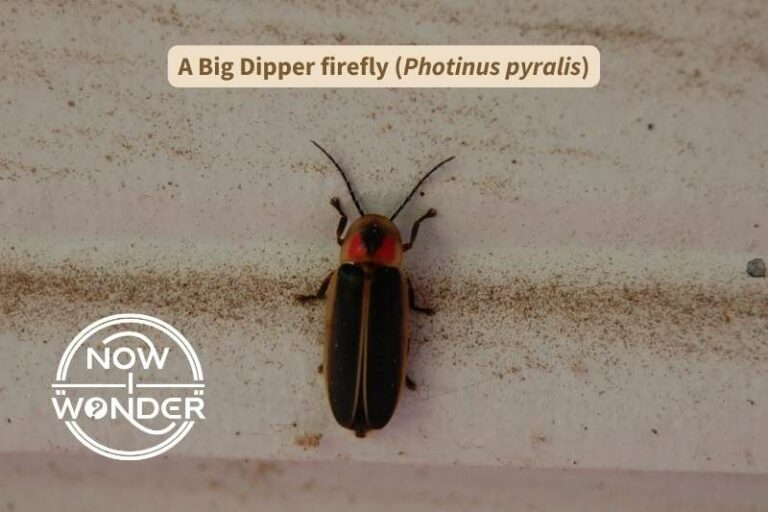Cloudless Sulphur butterflies are easy to overlook in favor of flashier butterflies but are quite beautiful in their own right.
As part of the “phoebis sulphur” family, the adult butterflies lack the bold patterns and iridescent sheen of many other species, such as brush-footed species. Instead their wings are a nearly uninterrupted, bright, and cheerful yellow.
Cloudless Sulphurs are common throughout the warm months in North Carolina and are easy to spot as they flutter around the landscape. Sometimes called “Cloudless Giant Sulphurs”, they are large butterflies compared to other members of their butterfly family. Their wings that span nearly 3 inches across when fully spread and nearly 2 inches from top to bottom but their true size can be hard to appreciate as they always perch with their wings closed above their backs.
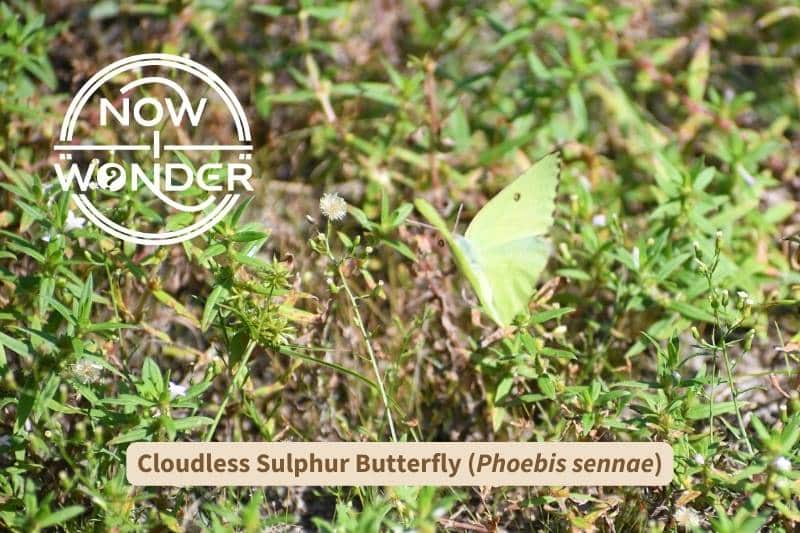
Fun Facts About Cloudless Sulphur Butterflies To Wow Your Friends
- Cloudless Sulphur (Phoebis sennae) butterflies have unusually long probosces. This allows them to access nectar from flowers whose nectaries are so deep they can’t be reached by other butterflies (Daniels, 2003).
- For example, the probosces of P. sennae are nearly 0.4 inches (1 cm) longer than those of a brush-footed butterfly species, the Gulf Fritillary (Agraulis vanillae).
- Cloudless Sulphur butterflies emerge from their pupae with much less of their dry weight devoted to lipids than do Gulf Fritillaries. Only 6% of a newly emerged adult Cloudless Sulphur butterfly is made up of lipids, compared to Gulf Fritillaries, which have 13-16% devoted to lipid (May, 1992).
- Lipids (otherwise known as fat) are an important source of energy for insects. This means that Cloudless Sulphurs have fewer energy reserves relative to Gulf Fritillaries and thus would be at greater risk of starvation, all things being equal.
- Luckily, evolution ensures that all things are not equal. Thanks to their extra-long probosces, Cloudless Sulphur butterflies can feed from a greater variety of flowers than can Gulf Fritillaries. In fact, Cloudless Sulphur butterflies are more than 4 times as efficient at foraging food than Gulf Fritillaries (May 1992).
- Cloudless Sulphur caterpillars (Phoebis sennae) hide during the day on their host plants in shelters they make by pulling leaves together with silk (Pyle, 1981).
- Cloudless Sulphur (Phoebis sennae) butterflies migrate with the seasons. Millions of these large, bright yellow insects venture north as the temperatures rise across the northern United States and sometimes reach as far north as Canada and the state of Maine. In the fall, the migration reverses and millions of butterflies flutter south ahead of dropping temperatures before likely overwintering in Florida and Mexico.
- Butterflies flying north usually reach North Carolina in April.
- Cloudless Sulphur butterflies (Phoebis sennae) seem to be especially fond of puddling and can often be seen grouped together around mud puddles and disturbed ground.
How Are Cloudless Sulphur Butterflies Classified?
| Kingdom | Animalia |
| Phylum | Arthropoda |
| Class | Insecta |
| Order | Lepidoptera |
| Family | Pieridae (“whites and sulphurs”) (subfamily Coliadinae “sulphurs”) |
| Genus species | Phoebis sennae |
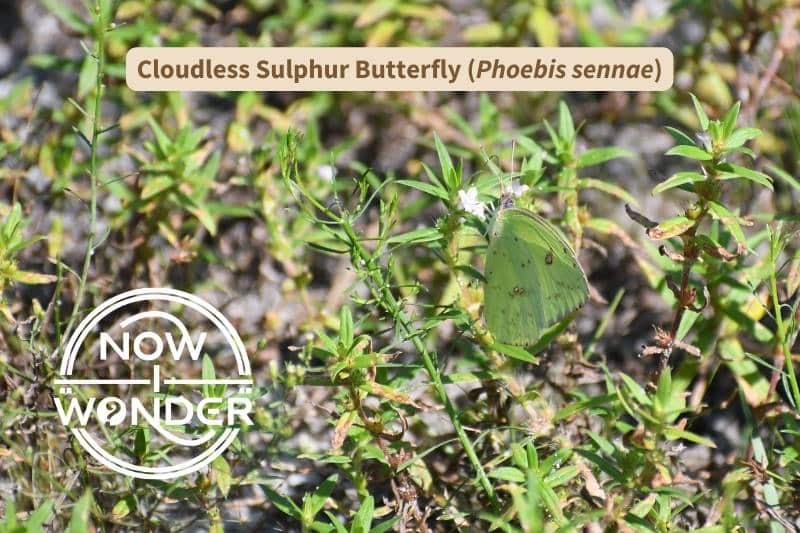
How Do I Know I’m Looking at a Cloudless Sulphur Butterfly?
Appearance of Cloudless Sulphur Butterfly Eggs
Female Cloudless Sulphur butterflies lay tiny pitcher-shaped eggs that start out pale and turn pale orange over time (Pyle, 1981). They lay eggs one at a time on the leaves of a host plant (Daniels, 2003).
Appearance of Cloudless Sulphur Butterfly Caterpillars / Larvae
When young, Cloudless Sulphur caterpillars are yellowish-green with a thick yellow side stripe. Their heads are also green with a sprinkling of black spots. Each segment of the caterpillars’ bodies are covered with tiny black spots surrounded by pale blue rings. The spots are arranged in stripes that run from side to side along each segment of the caterpillar.
As the caterpillars grow and age towards metamorphosis, their bodies turn bright yellow with widely spaced black side-to-side stripes (Glassberg, 2002)
Chrysalids are elongated, pointed at the ends and bulge drastically in the middle. They are pink or green with yellow or green stripes (Pyle, 1981).
Appearance of Adult Cloudless Sulphur Butterflies
The top (or dorsal) surface of Cloudless Sulphur butterfly wings are yellow in both sexes; males are brighter than females. Males are all yellow above, while females have broken black wing borders as well as a wing spot about halfway between their bodies and the tip of their forewing.
The underside (or ventral) wing surface of Cloudless Sulphurs varies by sex. Males are more uniformly colored than females and can range from yellow to tan, while females are brighter and can range from lemon yellow to nearly white.
Ventral wing markings also vary by sex. Males have fewer markings than females, often only a single (sometimes doubled) wing spot at the end of the leading forewing cell (about two-thirds of the way between the insect’s body and the tip of its forewing).
Female Cloudless Sulphur wings are mottled underneath compared to those of males. They share the wingspots seen in the males but also show scattered marks, especially a broken line that runs up the length of the wings towards the tips.
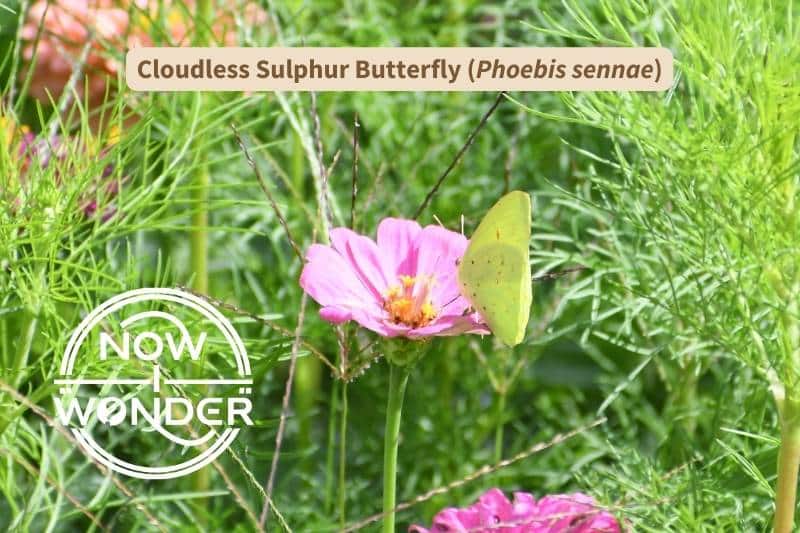
When Can I Find Cloudless Sulphur Butterflies in North Carolina?
Cloudless Sulphur butterflies are found throughout North Carolina between early March and late November. Multiple generations populate the summer months in North Carolina.
They can live year round in especially warm winters but even North Carolina’s winters are generally too cold for them, so they migrate down to Florida.
Where Should I Look to Find Cloudless Sulphur Butterflies in North Carolina?
Look for Cloudless Sulphur butterflies in any kind of open space with lots of blooming flowers and sunlight. These butterflies are common in areas like meadows, along roadsides, and in home gardens.
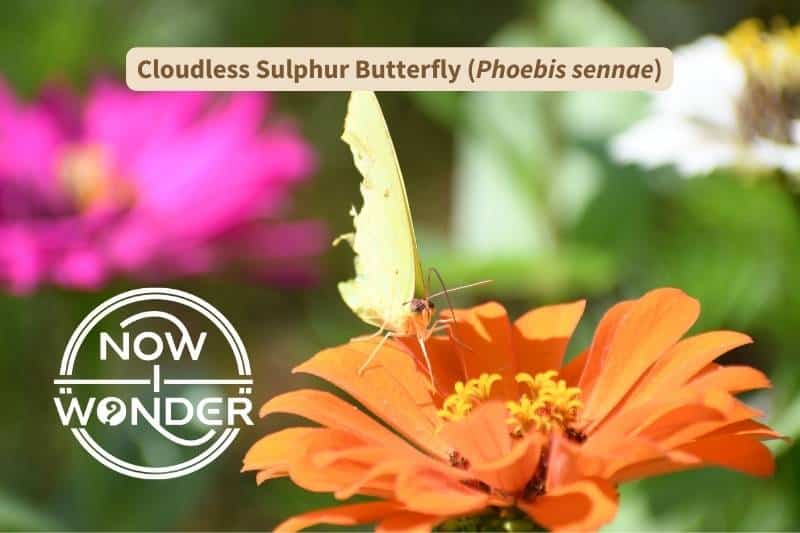
What Do Cloudless Sulphur Butterflies Eat?
Cloudless Sulphur Butterfly Larval Food Plants
Cloudless Sulphur (Phoebis sennae) caterpillars feed on mimosas, partridge pea (Chamaecrista cinerea), sennas (Cassia), clovers (Trifolium), and other legumes (Fabaceae) (Pyle, 1981).
Adult Cloudless Sulphur Butterfly Food
Cloudless Sulphur (Phoebis sennae) butterflies feed on nectar. They siphon nectar from flower nectaries through a very long, thin proboscis. They favor lantana, bougainvillea, turk’s cap, and hibiscus (Opler, 1994).
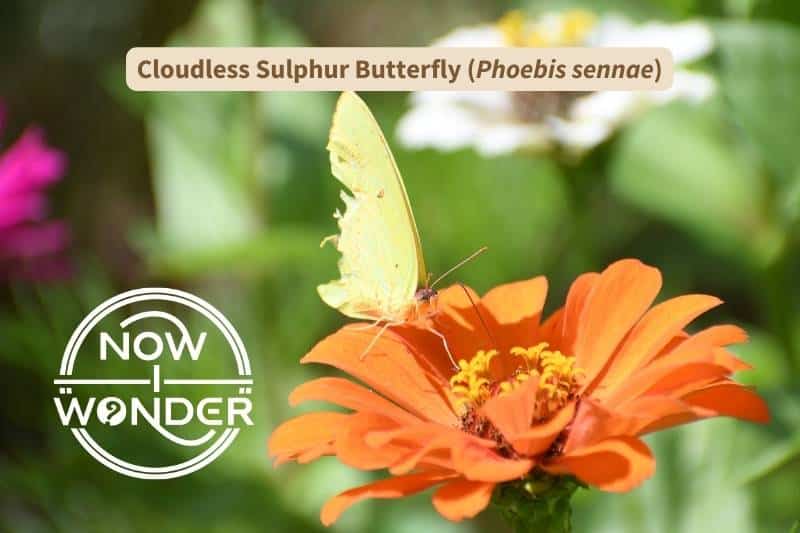
References
Daniels, Jaret C. Butterflies of the Carolinas. 2003. Cambridge, MN: Adventure Publications, Inc.
Glassberg, Jeffrey. 2002. Butterflies of North America. Michael Friedman Publishing, Inc.
May, P. G. 1992. “Flower Selection and the Dynamics of Lipid Reserves in Two Nectarivorous Butterflies.” Ecology 73 (6): 2181-2191.
Opler, Paul A. 1994. Peterson First Field Guide to Butterflies and Moths. Boston, MA: Houghton Mifflin Company.
Pyle, Robert Michael. 1981. National Audubon Society Field Guide to Butterflies: North America. New York, NY: Alfred A. Knopf.


